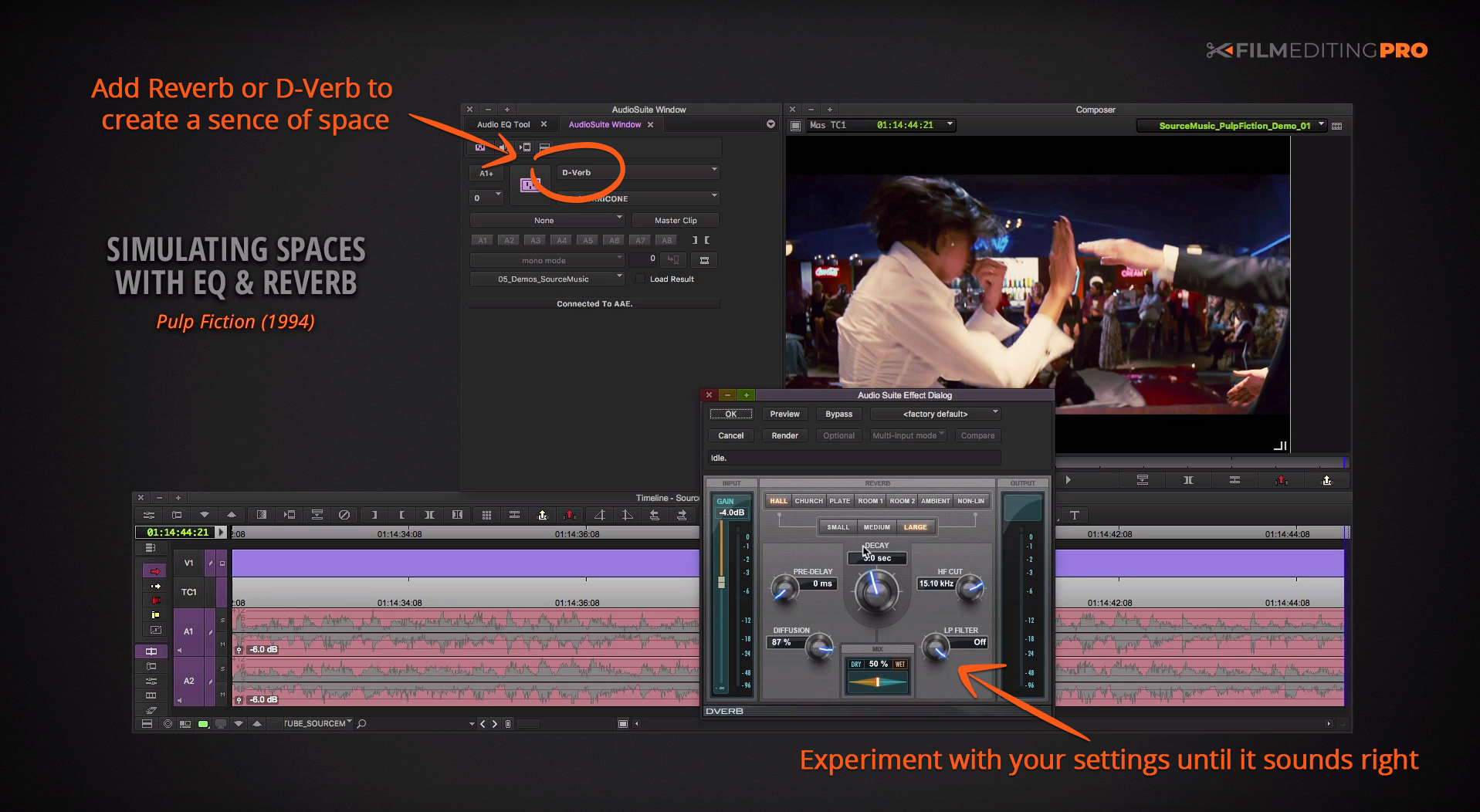Welcome to another Film Editing Pro tutorial! In this post, our trainer, Leon, is going…

Tips for Editing Source Music
When you want your music, or, for that matter, any sound, to live inside the environment of your piece, use a combination of EQ and reverb.
In this post, we’ve got some some quick and easy suggestions to blend it seamlessly. Watch the video or check out the tutorial below!
So what does it mean when music lives inside a specific environment when it comes to editing? That’s called source music.
Source music, also known as diegetic music, is music in a film that is part of the fictional setting.
Ask yourself, “can the character in the film hear this audio?”. If the answer is yes, that means the music is diegetic. As an editor, you’re usually striving to make any source music blend seamlessly with the fictional world of your film.
There are numerous potential source music scenarios, but here’s a few that you might have seen lately in your favorite films or TV shows:
1. In a Club or Bar
First, it could be in a club, bar, or some other venue where it is customary to hear music playing. For example, if you have a scene with two characters dancing in a bar, the music is often front and center in the mix to reflect the characters’ mental immersion in the rhythm and moment.
2. From a Radio in a Car or Other Vehicle
Next, the source music could be coming from a radio in a car or other vehicle. If we have a scene with a car approaching, we might hear some music at a lower or muffled level which then gets noticeably louder when we cut to a character sitting inside the car. It’s an indicator that we’re entering their world and hearing what they hear.
3. Heard in a Character’s Headphones
Finally, source music can also be heard in a character’s headphones. Below, we have some successive shots from Gross Pointe Blank (1997). In that scene, the music volume, EQ changes, and reverb tweaks progressively take us from the perspective of the gamer to that of Martin entering the store.
To make sure your source music sounds right, remember that different locations or spaces can have more or less reverb depending on their size.
Let’s dig deeper and see how to recreate this effect in our editing by using the famous dance scene from Pulp Fiction (1994). The music in that scene was meant to be front, center, and immersive, similar to a traditional music score. We’re going to affect that music and instead have it sound as if it’s coming from speakers, or a band playing in the club.
First, we want to add a sense of space. Reverb will provide the sonic texture of a large room, so let’s add that to our audio.
In the software we’re using for our example below (Avid), the name of the reverb effect is D-verb. We’ve entered some settings that we think will work but every piece of music is unique, and what works for one piece of music may not work for another.
So, if you’re bringing this technique with you to another project or a different music track, make sure you test and experiment.
Now that we’ve got the reverb creating the sense of a larger space, we need to work on adding distance as any speakers or band would be at the perimeter of the room. For that, we’ll want to add an equalizer effect. The main thing you’ll notice in our EQ settings in that we’ve decreased the highs.
When distance increases, it’s the highs in audio that dissipate the most quickly.
Remember, if music is supposed to be coming from something in the film itself, you’ll want to give it a sense of place using EQ and reverb. Generally, the closer the sound quality matches what the character is hearing, the more immersed your audience will be in your story.
—
If you’d like to learn more about music editing, be sure to sign up for our free 3-part course, Music Editing Mastery. Enjoy!
Leave Your Thoughts & Comments Below:





